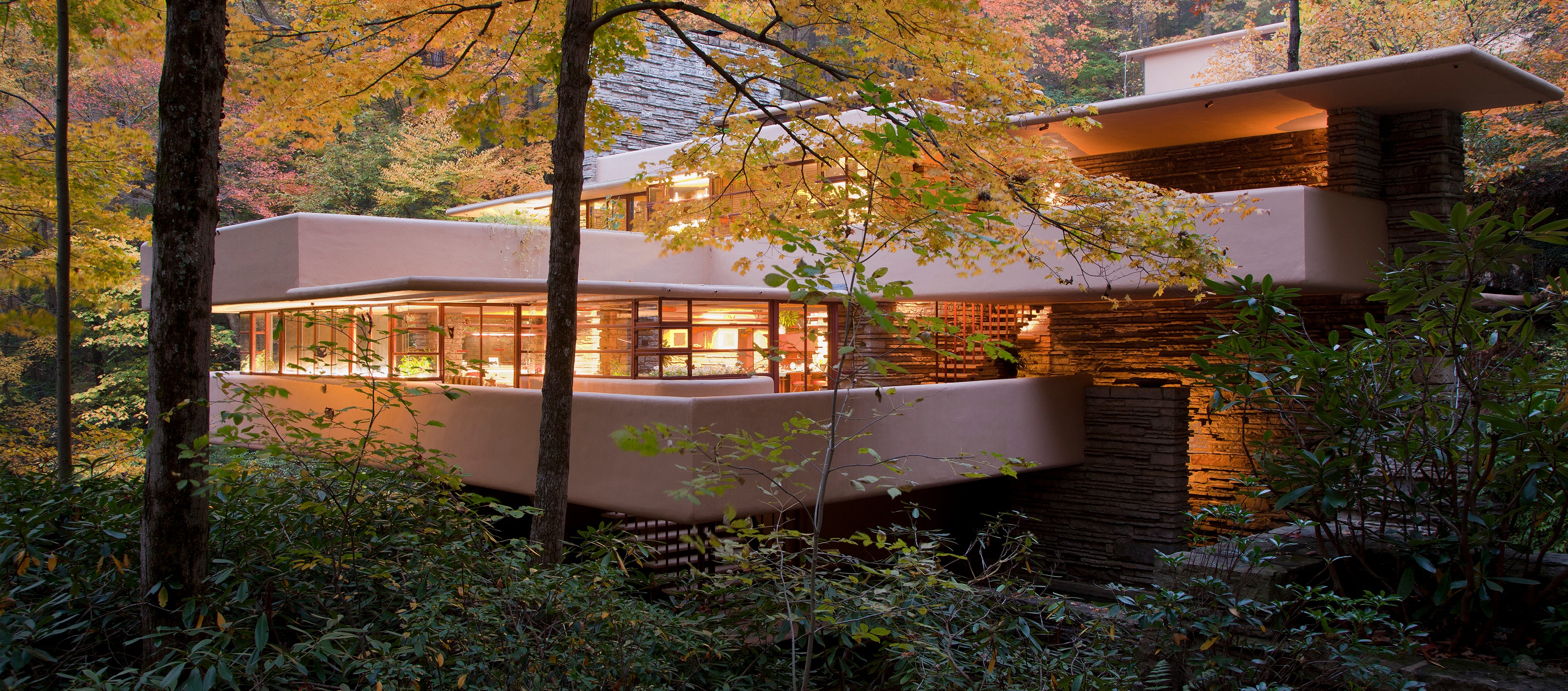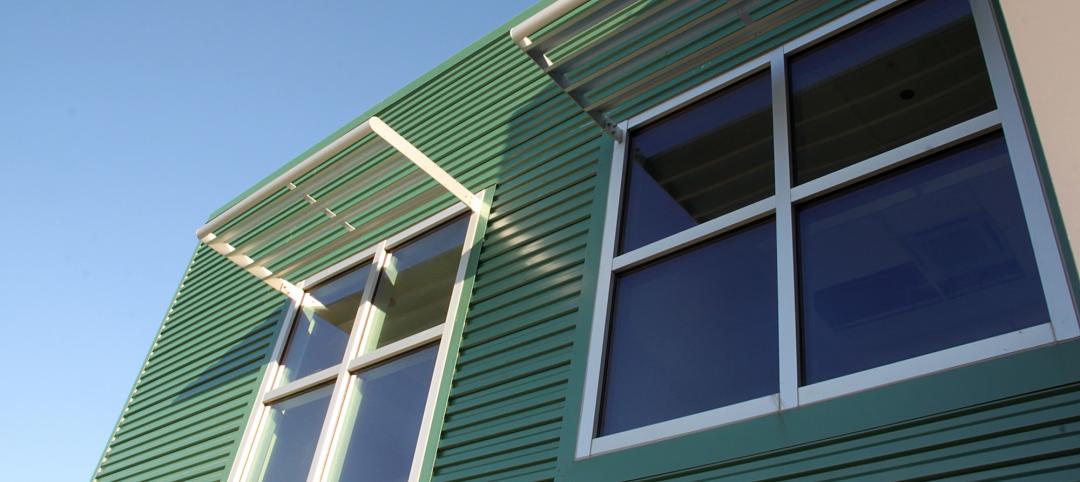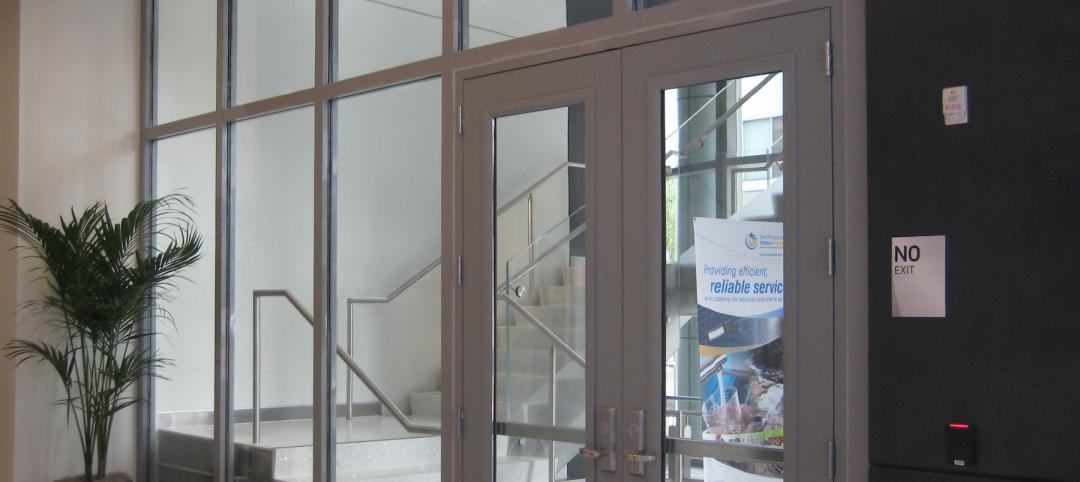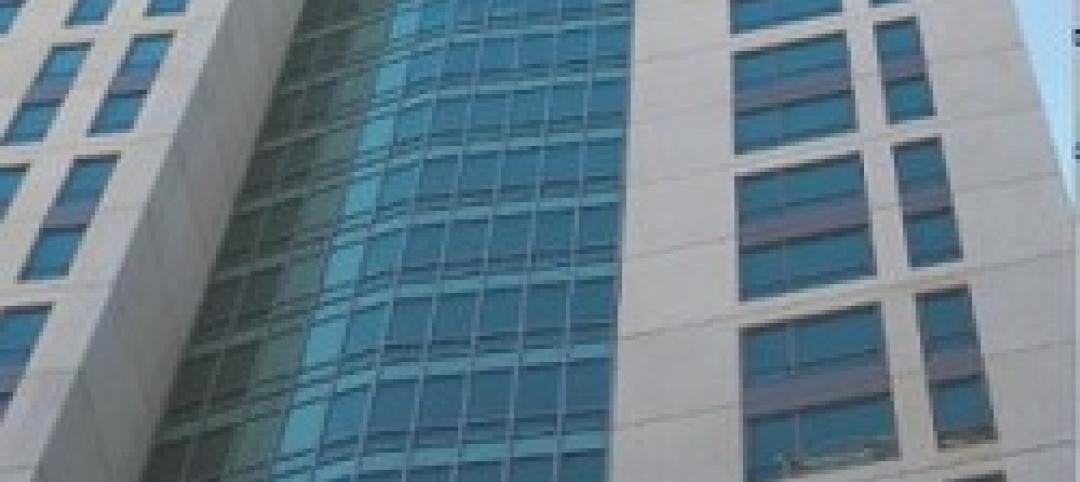In September 2019, the Western Pennsylvania Conservancy, owners of Frank Lloyd Wright’s Fallingwater, sought to complete restoration work on the window and door glass of the architect’s celebrated masterpiece. As it has done for many years, the organization turned to two trusted sources for their products and expertise: Vitro Architectural Glass (formerly PPG Glass) and Dlubak Specialty Glass Corp., a member of the Vitro Certified™ Network.
One of Wright’s primary goals in designing Fallingwater was to reduce, as much as possible, the visual barrier between the inside of the house and its iconic location above the falls of Bear Run in Pennsylvania’s Laurel Highlands. This guided Wright’s 1934 decision to specify Waterwhite glass, a low-iron glass that PPG Glass (now Vitro Glass) had recently introduced. Because Waterwhite glass is no longer made, the staff of Fallingwater today relies on its more sophisticated successor, Starphire Ultra-Clear® glass, to preserve its fabled exterior views. Manufactured by Vitro Glass using a proprietary low-iron formulation that continues to be refined, Starphire® glass has been chosen for all of Fallingwater’s window glass replacement projects over the past few decades.
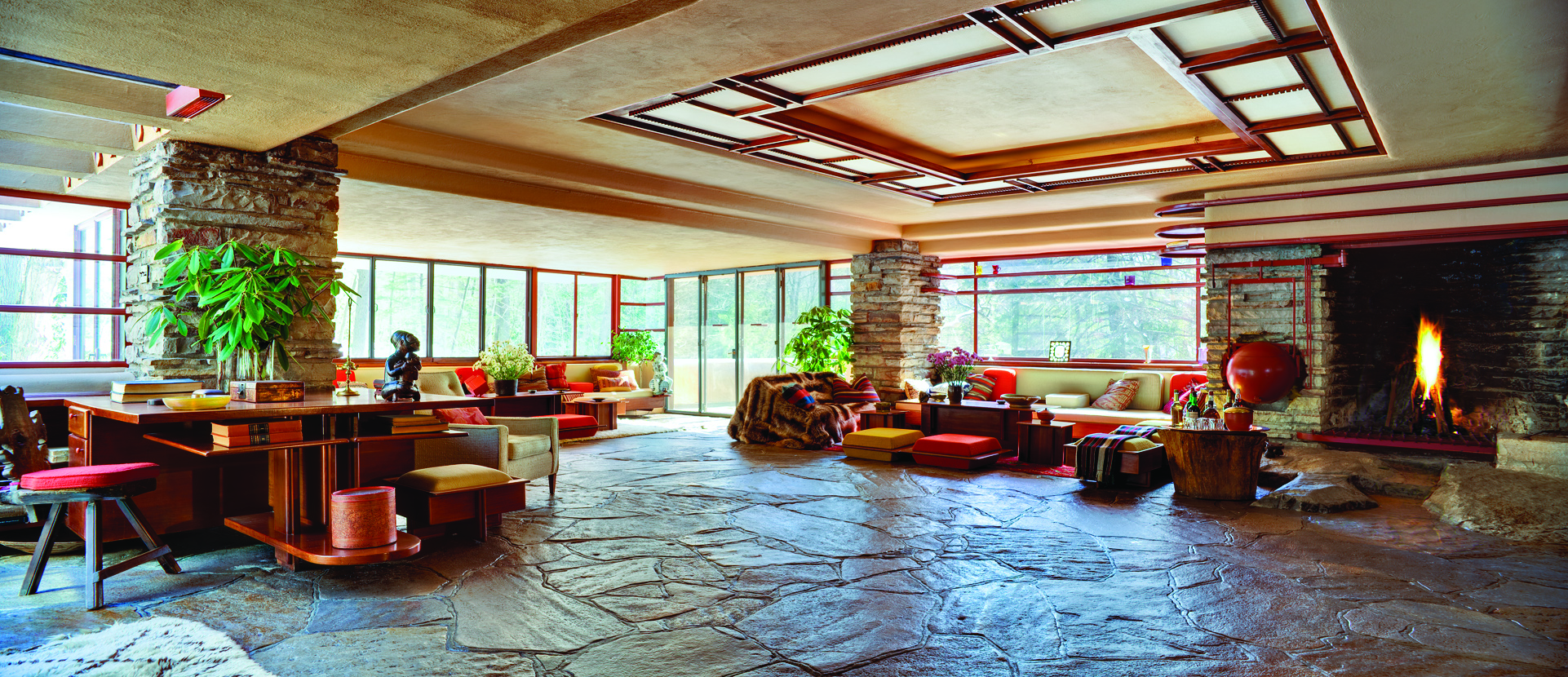 One of Wright’s primary goals in designing Fallingwater was to reduce, as much as possible, the visual barrier between the inside of the house and its iconic location.
One of Wright’s primary goals in designing Fallingwater was to reduce, as much as possible, the visual barrier between the inside of the house and its iconic location.
Photography courtesy of Western Pennsylvania Conservancy
Fallingwater is the only major work by Frank Lloyd Wright to be brought into the public domain with so much of its original furnishings and artwork intact. While regular maintenance is performed to keep it in prime condition, its caretakers work diligently to ensure that all efforts to preserve the property are made with his legacy in mind.
Window and door restoration is a continuous task, says Scott W. Perkins, director of preservation and collections for Fallingwater. “The window glass is replaced on a somewhat routine basis and usually in conjunction with steel conservation,” he explained. 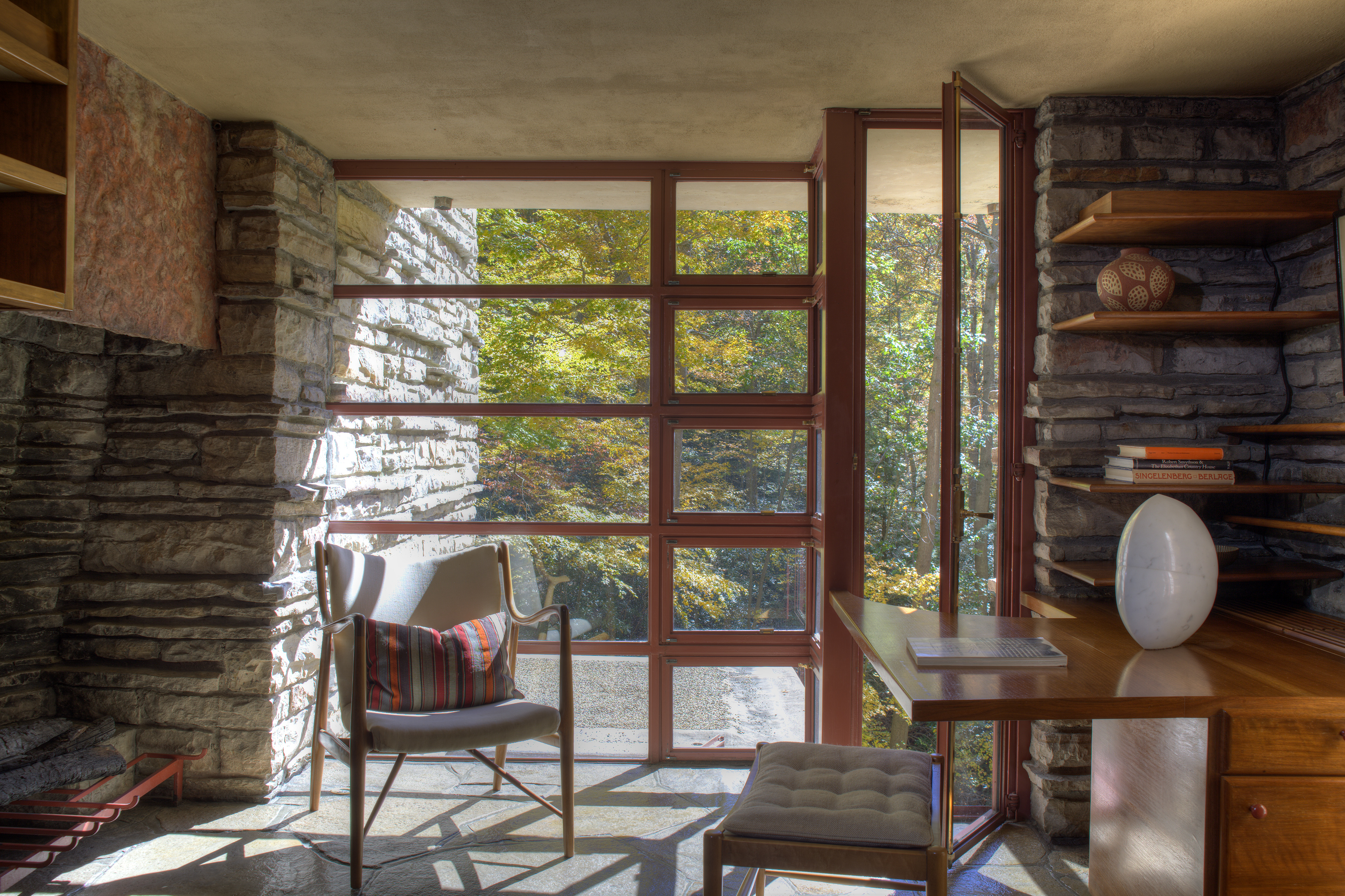
Although the last major round of window preservation took place in 2015, the Conservancy determined in September 2019 that 69 of Fallingwater’s window and door sashes needed to be repaired, including 16 windows that required complete replacement of the glass.
To enhance the strength and performance of the refurbished windows while preserving their historic integrity, the Conservancy specified Starphire® glass with a SentryGlas™ interlayer by Kuraray. In addition to offering five times the strength of ordinary laminating materials and 100 times the stiffness, the interlayer helps protect furnishings by limiting their exposure to ultraviolet (UV) light.
While the interlayer gives strength to Fallingwater’s window glass, Starphire® glass preserves its beauty. With visible light transmittance (VLT) of 91% in a standard ¼-inch (6-millimeter) thickness, Starphire® glass delivers the virtually unobstructed outdoor views Wright envisioned for Fallingwater when he first specified Waterwhite low-iron glass in 1934. “The clarity of the glass allows for it to appear invisible, a feature Wright admired,” Perkins explained.
Nearly 25 years after Starphire® glass was introduced, it remains the clearest, most transparent commercial float glass available to architects today – containing 87% less green than ordinary clear glass and offering pure, undistorted transmitted color with absolutely no grays or yellows.
To learn more and request samples, visit www.vitroglazings.com/starphire.
Related Stories
Sponsored | | Jun 27, 2014
SAFTI FIRST Now Offers GPX Framing with Sunshade Connectors
For the Doolittle Maintenance Facility, SAFTI FIRST provided 60 minute, fire resistive wall openings in the exterior using SuperLite II-XL 60 insulated with low-e glazing in GPX Framing with a clear anodized finish.
| May 28, 2014
KPF's dual towers in Turkey will incorporate motifs, symbols of Ottoman Empire
The two-building headquarters for Turkey’s largest and oldest financial institution, Ziraat Bank, is inspired by the country’s cultural heritage.
| May 27, 2014
Fire Rated Glass contributes to open lab environment at JSNN
Openness and transparency were high priorities in the design of the Joint School of Nanoscience & Nanoengineering within the Gateway University Research Park in Greensboro, N.C. Because the facility’s nanobioelectronics clean room houses potentially explosive materials, it needed to be able to contain flames, heat, and smoke in the event of a fire. SPONSORED CONTENT
| May 20, 2014
Kinetic Architecture: New book explores innovations in active façades
The book, co-authored by Arup's Russell Fortmeyer, illustrates the various ways architects, consultants, and engineers approach energy and comfort by manipulating air, water, and light through the layers of passive and active building envelope systems.
| May 5, 2014
Tragic wired glass injury makes headlines yet again
In the story, a high school student pushed open a hallway door glazed with wired glass. His arm not only broke the glass, but penetrated it, causing severe injuries. SPONSORED CONTENT
Sponsored | | May 3, 2014
Fire-rated glass floor system captures light in science and engineering infill
In implementing Northwestern University’s Engineering Life Sciences infill design, Flad Architects faced the challenge of ensuring adequate, balanced light given the adjacent, existing building wings. To allow for light penetration from the fifth floor to the ground floor, the design team desired a large, central atrium. One potential setback with drawing light through the atrium was meeting fire and life safety codes.
| Apr 25, 2014
Recent NFPA 80 updates clarify fire rated applications
Code confusion has led to misapplications of fire rated glass and framing, which can have dangerous and/or expensive results. Two recent NFPA 80 revisions help clarify the confusion. SPONSORED CONTENT
Sponsored | | Apr 23, 2014
Ridgewood High satisfies privacy, daylight and code requirements with fire rated glass
For a recent renovation of a stairwell and exit corridors at Ridgewood High School in Norridge, Ill., the design team specified SuperLite II-XL 60 in GPX Framing for its optical clarity, storefront-like appearance, and high STC ratings.
| Apr 8, 2014
Fire resistive curtain wall helps The Kensington meet property line requirements
The majority of fire rated glazing applications occur inside a building to allow occupants to exit the building safely or provide an area of refuge during a fire. But what happens when the threat of fire comes from the outside? This was the case for The Kensington, a mixed-use residential building in Boston.
| Apr 2, 2014
8 tips for avoiding thermal bridges in window applications
Aligning thermal breaks and applying air barriers are among the top design and installation tricks recommended by building enclosure experts.


